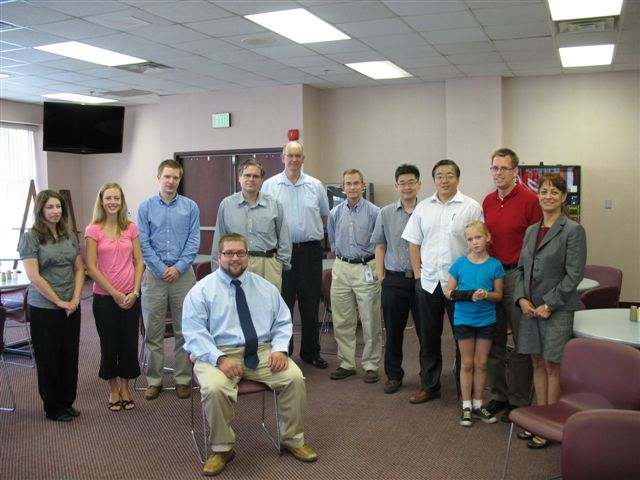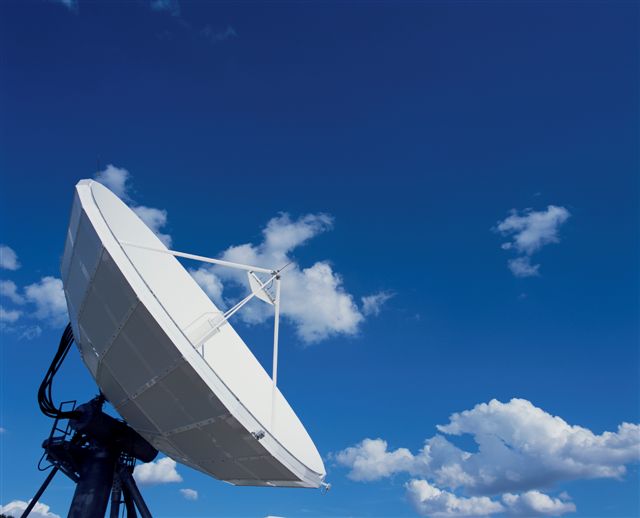April 6, 2010
Ray, Beam and Hybrid
Techniques for
Analysis of Electrically Large Antenna Configurations
Professor
Prabhakar H. Pathak

At sufficiently high
frequencies,
for which radiating objects become quite large (or even moderately
large) in
terms of the wavelength, conventional numerical methods employed for
the
solution of practical antenna radiation problems become strained or
even
intractable. It then becomes natural and far more efficient to employ
asymptotic high frequency ray and beam methods, and also hybrid methods
which
combine high frequency and numerical techniques, respectively, to
analyze
electrically large antenna problems. A uniform version of the
geometrical
theory of diffraction (GTD) [ 1 ], which is referred to as the UTD [
2,3 ], is
one such ray method which can be used effectively. A significant
advantage of
the UTD is that it offers a physical insight into the antenna radiation
mechanisms involved in terms of diffracted rays together with
conventional
geometrical optics (GO) rays. Such a direct and vivid picture based on
a ray
description of the radiation of electromagnetic (EM) waves is typically
not
shared by any other methods of solution. The power of UTD will be
illustrated
through applications to antennas in complex environments. In some
special
situations involving a confluence of ray caustics (or foci) with ray
shadow
boundaries the UTD alone may become inapplicable. In the latter
instance, the
high frequency physical optics (PO) method is often employed; however,
PO
generally needs an integration of the assumed currents on the large
radiating
object thus making it rapidly inefficient with increase in the
operating
frequency. A useful and more accurate alternative is the use of beam
methods,
e.g., the one based on the complex source beam (CSB) approach [4,5,6].
An
extension of the UTD for CSB illumination is developed and will be
described
for specific applications. In many practical applications, a radiating
object
can contain both electrically large and small parts; in such cases it
becomes
necessary to hybridize high frequency and numerical methods in order to
combine
the best features of both methods and hence also to overcome the
limitations of
both. In particular, examples involving the application of UTD, CSB,
and hybrid
methods, respectively, will be presented highlighting the power of
each.
Examples will include the treatment of large satellite antenna
reflector
systems, and other antennas including large complex and conformal
phased arrays
on complex airborne, space borne or ship platforms, and of antennas in
urban/rural environments. In addition, an analysis of near field
antenna
measurements for far zone pattern predictions will also be considered.
June
20, 2010
ULTRA-WIDEBAND
AND INTERLEAVED
POLYFRACTAL ANTENNA ARRAYS
Dr
Joshua S. Petko
Recently,
in order to successfully combine the
positive attributes of both periodic and random arrays into one design,
a novel
class of arrays, known as fractal-random arrays, has been introduced.
In
addition, global optimization techniques, such as genetic algorithms,
have been
applied to antenna array layouts to provide highly directive, thinned,
frequency agile, and shaped-beam antenna systems. However, these
methodologies
have their limitations when applied to more demanding design scenarios.
Global
optimizations are not well equipped to handle the large number of
parameters
used to describe large-N arrays, and fractal-random arrays lack the
recursive
properties needed to reconstruct their geometries exactly from a small
set of
parameters. To overcome these difficulties, a new class of arrays,
called
polyfractal arrays, is introduced in this dissertation that possess
properties
well suited for the optimization of large-N arrays. These polyfractal
arrays
possess underlying self-similar properties that can be exploited to
exactly
reconstruct the array geometries from small sets of parameters and to
increase
the speed of the associated array factor calculations. In addition, an
autopolyploidy-based chromosome expansion native to polyfractal arrays
is
introduced that can dramatically accelerate the genetic algorithm
optimization
process. This process allows the genetic algorithm to first evolve
simple
designs very quickly and then add increasing levels of complexity when
they are
needed to continue the optimization. The entire procedure has been
shown to be
very effective in creating optimized large-N antenna layouts. For
example a
1616-element linear array can be optimized to possess a -24.30 dB
sidelobe
level with a 0.0056◦ half-power beamwidth. In addition, robust Pareto
optimization techniques can be applied to reduce the peak sidelobe
levels at
several frequencies specified over a wide bandwidth. This procedure can
lead to
ultra-wideband antenna array designs, with one example discussed in
this
dissertation maintaining a −19.34 dB peak sidelobe level with no
grating lobes
from a range covering 0.5λ to 20.0λ minimum interelement spacings,
corresponding to a bandwidth of at least 40 : 1. These powerful array
designs
can be utilized as building blocks in robust, multi-beam,
ultra-wideband
antenna array systems.



November
18, 2010
Time Domain Finite-Element
Finite-Difference
Hybrid Method and Its Application to Electromagnetic Scattering and
Antenna
Design
Shumin
Wang .
A
hybrid method that combines the
Finite-Difference Time-Domain (FDTD) and the Finite-Element Time-Domain
(FETD)
methods is presented for high-fidelity and high-efficiency
electromagnetic
simulations. The FETD method is applied to model curved conductor
structures
while low-cost FDTD method is applied to model inhomogeneous dielectric
and
truncate computational boundaries. In order to simplify the treatment
of highly
irregular FDTD/FETD interface, composite elements are presented that
encapsulate most interfacing detail. Unstructured tetrahedral meshes
are
generated by the advancing front technique with ``sweep-and-retry" and
smoothed by a combined quality improvement procedure. Due to the low
profile of
the resulting tetrahedral mesh, the sparse Cholesky decomposition can
be
applied effectively to solve the FETD matrix. Examples demonstrate the
validity
and effectiveness of the hybrid method in electromagnetic scattering
and near
field antenna design for magnetic resonance imaging.
Presentation








